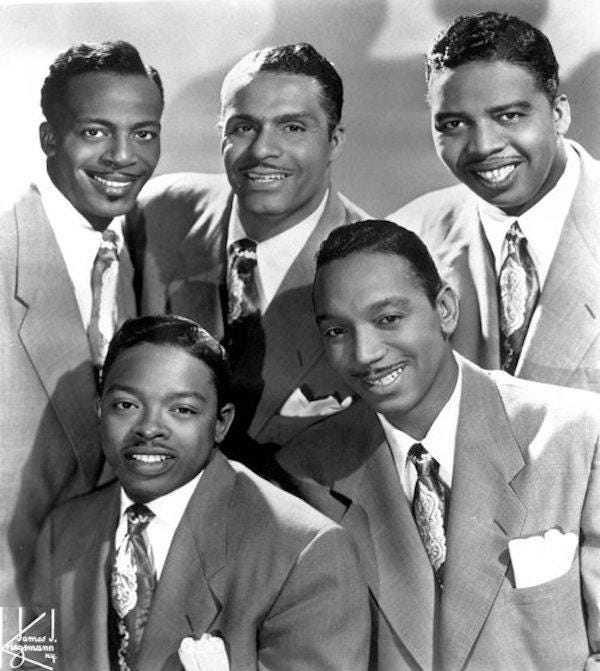#34: A 500 mile flight, The Dixie Hummingbirds, and 1700s Frontier New Years Eve Party
For South Carolina history lovers far and wide! Enjoy weekly SC history and upcoming SC historical events
Dear reader,
Welcome to Newsletter #34 of The South Carolina History Newsletter! I’m so happy you’re here.
Welcome “aeb” “sarahcwadsworth” “penguinscrapper” “loriblissit” “elizabethsumwaltclark” “Quailbird4” “rhndasue49” “terry.hayes89” “lizziema89” “nixstacy” “wilsonb” to our SC History Newsletter community! Woohoo!
I hope you enjoy today’s newsletter, and as always, please feel free to reply to this email with your ideas and suggestions on South Carolina history you’d like to learn more about. I’m only a click away.
Additionally, please join us & keep the conversation going by becoming a member of our SC History Newsletter Facebook Community here! I can’t wait to meet you.
And now, let’s learn some South Carolina history!
Yours truly,
Kate
(Writing from Greenville, SC)
➳ Featured SC History Event
Please enjoy our featured SC History Event below, and click here to visit my SC History Events Calendar that organizes all the upcoming SC history events I have discovered. Please let me know if you’d like to add an event to the calendar! Reply to this email or send me a note at schistorynewsletter@gmail.com.
Thursday, March 21st from 5:00 - 6:30 pm | “1700s Frontier New Years Eve Party” | The Coastal Discovery Museum | Hilton Head Island, SC | TICKETS: $30
“Does March seem like the wrong month for a New Years Eve celebration?! For the frontier families living in Beaufort County before 1752, the year the modern calendar was adopted, New Years Day was observed on March 25 and had been for thousands of years. Come learn how frontier families on Hilton Head Island celebrated by making Pomanders, Wassail, and Sweet Bags to usher in their new year. All supplies provided. Each participant will leave with their New Year crafts and wine in tow. $30 per person (ages 21 and older only please).”
➳ SC History Fun Facts
I.
Did you know that hummingbirds fly 500 miles nonstop over the Gulf of Mexico to reach us in South Carolina each March?
One of the great joys of living in South Carolina is experiencing those tiny, spunky, beautiful little avian friends of ours who return each spring… hummingbirds! I have been reading up and it appears that this weekend, we should start seeing hummingbirds back at our feeders! This is your sign to dust off your feeder, load up the sugar water, and get ready for our feathered friends’ triumphant return.
Here’s a little bit of natural history for you on the hummingbird in South Carolina:
There are over 300 species of hummingbirds in the world. 12-15 of those species migrate to the United States, and even fewer to Canada each year. In South Carolina, we enjoy these species:
Ruby-throated hummingbird
Rufous hummingbird
Black-chinned hummingbird
Buff-bellied hummingbird
Calliope hummingbird
Anna’s hummingbird
Broad-billed hummingbird
Broad-tailed hummingbird
Allen’s hummingbird
Blue-throated mountain-gem
It is believed that hummingbirds developed in South American after arriving from Asia 22 million years ago. As the hummingbirds spread through South America, they began competing for resources, and a few species began migrating to areas with more abundant resources and less competition. This cycle of “advancing and retreating with the seasons is the basic foundation of their migratory pattern.”
For a creature so small, the hummingbird uses an extraordinary amount of energy to migrate and survive. Take the ruby throated hummingbird that we all enjoy so much in South Carolina. This little bird does not migrate in a flock, but by itself. Each bird “follows its own instincts” for when it must migrate, as well as its routes. Scientists believe that there are environmental triggers that can spark the hummingbird to migrate including the angle of the sun and scarcity of food.
To prepare to migrate back to South Carolina each spring, the ruby throated hummingbirds spend the month of February in Mexico’s Yucatan Peninsula where they “feast on insects” as they prepare for one of the toughest migrations of any bird — and you’ll see why in a second. Each year, thousands of hummingbirds fly over the open water of the Gulf of Mexico for 500 miles to reach US shores. This straight shot flight takes approximately 18-22 hours.
What’s sweet is that some hummingbirds are not strong enough to make the “straight shot” journey and stop along the way to rest on “oil rigs and fishing boats,” before bravely continuing on their flight. Ruby-throated hummingbirds arrive each spring to South Carolina around mid-March (here we are!). The birds will mate each spring, and build nests on “deciduous trees near a river or a stream.” Females will lay 1-3 eggs. Male hummingbirds will head back down south (their 500 mile journey in reverse!) in September, with females following shortly thereafter in October.
In preparation for migration, the ruby-throated hummingbirds double their weight from “3 grams to 6 grams” prior to departing. They can consume “up to 50% of their body weight in nectar each day.” The birds need the extra weight for their arduous journey. Additionally, their heart rate is 1,200 beats per minute, and their wings flutter at 53 times per second, so they need large amounts of energy to operate in a normal day, much less on a non-stop journey of hundreds of miles. We wish the little guys the best of luck as they start their migration our way.
Please reply all to this email to let me know if you’ve spotted your first hummingbirds on the feeder!
II.
While we love hummingbirds on the feeder, did you also know that a famous Gospel group called The Dixie Hummingbirds hailed from Greenville, South Carolina, and were a direct influence on Stevie Wonder and James Brown?
In my research on hummingbirds above, I was pleasantly surprised to find that in the 1920s, South Carolina produced a successful gospel quartet (and later quintet) named the Dixie Hummingbirds, who would later go on to win a Grammy award with Paul Simon!
The group started in 1928 in Greenville, SC. 12-yr-old James Davis got a group of his neighborhood friends together to start the Gospel singing group. They were Bonnie Gipson, Jr., Fred Owens, and Barney Parks. At first, they were called the Sterling High School Quartet, named for the high school they attended in Greenville. The group made the transition from “a cappella singing to electrified music” when they started singing at the Bethel Church of God in Greenville.
By the mid-1930s, the group was singing professionally in churches and on the radio. Davis originally wanted to name the group the South Carolina Hummingbirds, but everyone thought the name was too long, so it was shortened to the Dixie Hummingbirds. They fans affectionately calls them “The Birds” for short.
In 1938, the group drove to New York City to record “12 old-time harmony sides for the Decca label.” That same year, they recruited 13-yr-old singer and Spartanburg native Ira Tucker into the group. The group continued to lean into their “more powerful electric sound” which would serve as a “precursor to rock music.” Ira Tucker would work his way up from backing tenor to the “fiery and flamboyant” lead singer. With their 1952 records on the Peacock label, the Birds were “on their way to gospel stardom.”
Here are some early videos of the group singing together that I believe you will thoroughly enjoy like I did:
The Dixie Hummingbirds’ best known song is “Loves Me Like a Rock.” In 1973, they re-recorded the song with singer-songwriter Paul Simon, and won a Grammy Award.
Here is how the original “Loves Me Like a Rock” sounded:
And here are the Dixie Hummingbirds singing “Loves Me Like a Rock” with Paul Simon and Stevie Wonder below. Stevie Wonder has openly shared that the Birds were a “direct musical influence” on him as an artist. The group’s spirited singing and showmanship would also influence such musicians as Jackie Wilson and James Brown — and lead the way towards the creation of soul music in the 1960s.
One reviewer wrote that the group claimed “almost universal recognition as the greatest Southern quartet of their generation.” Author Viv Broughton wrote in his book Black Gospel, "the Hummingbirds, and Ira Tucker especially, remained at the head of the gospel quartet singing for almost thirty years, becoming the grand masters of the style." The group was awarded a National Heritage Fellowship award in 2000 by the National Endowment for the Arts, they are in the Grammy and Vocalist Hall of Fame. The Dixie Hummingbirds are yet to be inducted in the Rock & Roll Hall of Fame, but let’s hope they are recognized in the years to come.
➳ Quote from an SC historical figure
I.
“Well, way down South where we came from, in the land of the good sunshine, there’s a little bird that flies around, humming all the time. And one day in the spring while the birds were humming, James B. Davis over there, he decided to name this group The Dixie Hummingbirds... So we’ve been singing for the masses, ever since we were in our teens… Who are we? The Dixie Hummingbirds! Well, the road was rough and the going was tough, but we managed to sing every now and then…and we love to sing! We love to sing! We’ve been singing for 50 long years!”
— Excerpt from “Who We Are” song by the Dixie Hummingbirds - listen here!
Sources used in today’s newsletter:
I always want to improve my work. Answer the poll below to give me your review of today’s newsletter. I also welcome your suggestions for new content! Simply reply to this email with your ideas. Thank you!













